Third of a series of articles about my careful attempt to recreate a generic framework of Helleno-Kemetic magic. For an introduction and overview check out this article
Version 1.1 - December 13, 2019
In this part I am recreating a technique of contemplative or ecstatic concentration based on commonalities between Jewish, Eastern Orthodox, Coptic, and Sufi methods. On the way we will dive into Kemetic epistemology, vocalizations of baboons, personal experience, and the mysteries of the barbarous names and vowel strings found in Helleno-Kemetic magical papyri. Feel free to skip directly to the praxis part.
Theoria
θεωρῐ́ᾱ • (theōríā) f (genitive θεωρῐ́ᾱς); sight, spectacle, viewing; consideration, theory, speculation, contemplation
Encircling the Heart
Although the Anastasi Handbooks never explicitly mention practices like contemplation, or meditation, there is no doubt about the importance about such techniques in systems of magic, be it for reasons of concentration, getting rid of distracting thoughts and being able to focus the will to modulate the fabric of the cosmos and influence contingency towards a desired intention.
Nowadays meditation practices and mindfulness techniques are readily available, mostly devoid of their "spiritual baggage" and usually appropriated from Buddhist or Tantric traditions of Asia. The theosophical movements of the Victorian era have introduced these schools of meditation into Western traditions of spirituality and heavily influenced magical techniques. The overwhelming discourse about Eastern knowledge about such methods has almost led to an abandonment of similar Western traditions of contemplation and styles of meditation and focus.

Most Eastern forms of meditation popularized in the West are inspired by Buddhist traditions. These are actually deeply connected to their spiritual roots where practicing these techniques are supposed to bring the practicioner closer to realizing that there is no self that is ultimate and immortal, separate and individual1. This metaphysical concept is in fact quite alien to the idea of an individualized spirit and soul that has been predominant in Europe and the Near East all the way back to the Helleno-Kemetic era.
The fundamental differences in approach of contemplative practice between the East and the West has been nicely described by Mouni Sadhu2:
Nowadays, when we speak about concentration and other occult practices, the Eastern tradition or Yoga often involuntarily comes to mind. [...] in Raja-Yoga the mind and its functions are put before another power in man which is often called 'the heart'. From the start we hear little about feelings and emotions apart from constant admonitions, that both must be dominated and removed from the field of consciousness of a Raja-yogi. This happens because of an assumption, that if the mind, as superior to the emotional counterpart in man, has been subdued, the lower one - also called the 'astral-body' - will automatically be controlled. [...]
As the Eastern occult schools treat concentration as a means of achievement for the highest goal, so the mind takes precedence over the heart. But in the Western spiritual tradition this is reversed. [...] in the Western countries the heart aspect predominates, and the mind's subordination follows later. This means, that it is recognized - not without good reason - that first must come the purification and strengthening of the seat of human emotions, which often creates so many difficulties for aspirants of spirituality. The seat of our moral law must first be balanced, and then order comes to dwell in the pure heart. It is then that the development of the mind's powers cannot be dangerous, either for their owners or for their surroundings.2

In Western mystical traditions altered states of consciousness and mental focus have traditionally been achieved through various prayer techniques that keep the mind busy and the heart pure until the desired exalted state of the soul has been reached.
In "Holy Daimon" Frater Acher stresses the importance of purification of our soul in magical practice when we go into such mind states:
When we go into isolation, we [...] deliberately create emptiness and openness within us. We make of ourselves an untouched space, an empty vessel that attracts the attention of all sorts of spiritual beings who would love to take up residence in it and fill it with their own waters. It offers shelter and food and richness to all the spiritual beings who cannot provide these things for themselves, who prey on carrion. And carrion is exactly what such energy is to them.
[...W]e must guard this empty vessel and ensure that we don’t get tricked and abused by other beings who would prey on our openness. This is why we seal this vacant space with joy.
The type of joy we mean is the most wonderful protective seal. Joy is the shield that shines like the sun. [...]
Once we have experienced real joy, we’ll see how vastly different it is from the other contemplative emotions experienced in seclusion [...]. Melancholia, nostalgia, and daydreaming are red carpets rolled out for beings who would take up residence in the vessel of our mind. For as long as we are attached to these emotional states, our vessel cannot be considered empty.3
Walking Backwards
Besides Jewish and early Christian spiritual traditions during Helleno-Roman times that transmitted plenty of material on "inhibitory" contemplative and "excitatory" prayer practices, there was also an equally strong Greek tradition of contemplation:
Empedocles who lived around 500 BC already wrote:
You must plunge beneath your crowded thoughts and calmly contemplate the higher realities with pure, focused attention. If you do this, a state of inspired serenity will remain with you throughout your life, shaping your character and benefiting you in so many ways. But if you direct your attention instead to the trivial things most people obsess about, the silly nonsense that dulls their minds, you’ll just acquire more objects which you’ll only lose anyway.
In "Phaidon" Plato mentions:
Without a doubt, then the soul is perfectly meditated when it is not disturbed by anything, neither by hearing, nor by sight, nor by any pain, nor by any delight, but is isolated as much as possible in itself by farewell the body, and when it avoids, as far as possible, every collaboration and every contact with it, it flows in reality. (Phaidon 65c-d)

Pagan traditions probably had different orally transmitted techniques to achieve "henosis" ("one-pointed awareness"), but written accounts only survived through the works of Iamblichus descriptions of "theurgy" and another one by Plotinus based on his "Enneads".
In order to attempt to reconstruct an analog Helleno-Kemetic system of attaining an altered state of "gnosis" let's assume that foundations for all the later developments on the Western traditions of meditation and contemplation have been laid during the syncretic era of Helleno-Roman Egypt.
Based on that assumption let's go back in time and take a look at several traditions that potentially emerged out of Alexandria and then try to find common ground.
Chariot Rides
Already present in Helleno-Kemetic times were ecstatic Jewish prayer techniques. The so-called Hekhalot literature and Merkhaba mysticism from the Talmudic era were centered on visions and prophecies, ascents to heavenly palaces, abilites of man to draw down divine powers to earth through ecstatic techniques of prayer, recital of hymns, as well as the theurgic use of secret names of God. After the Talmudic period these methods and others based around the Sefer Yetzirah, Bahir and Zorah were exclusively known and practiced in secret circles. During the Middle Ages They were rediscovered by kabbalah scholars like Abraham Abulafia, Isaac of Acco or Joseph ben Abraham Gikatilla.
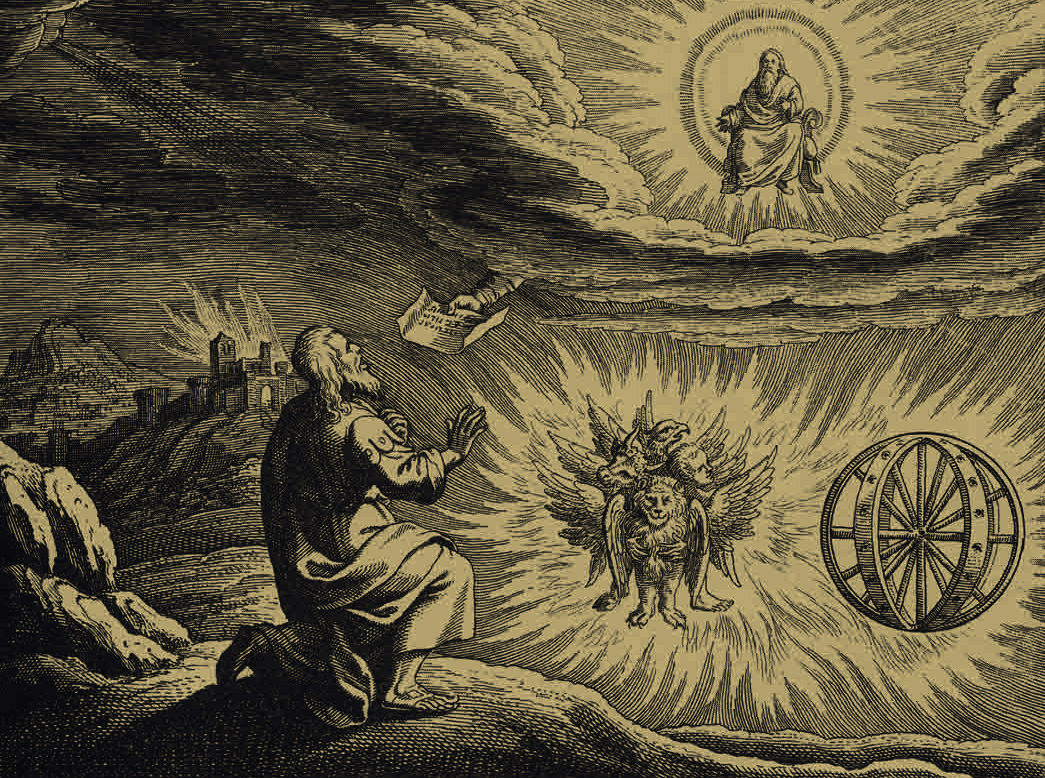
Let's take a look at the techniques outlined by Abraham Abulafia who developed a system of practical kabbalah that involved the mantra-like chanting of Hebrew syllables. In his late medieval work "Life of the World to Come" he describes one method as thus:
At the same hour that you prepare yourself to speak with your creator, be careful to empty your thoughts from all the vanities of this world and request Him to proclaim his courageous victories to you. And adorn yourself in a prayer shawl (Tallit) and put phylacteries (Tefillin) upon your head and arms if you can, so that you will be in awe and fear of the Shekhinah (the female aspect of God) who is present with you at that moment. [...] And this will be a witness that you come to work the work of God your Lord in happiness and an innocent heart.
And begin to combine letters, a few with many, and turn and revolve them speedily until your heart is warmed by their revolutions. And put your heart in their movement and what their revolution engenders. And when you feel in yourself that your heart has been warmed very much by the combinations and you understand from them new matters that you did not grasp from human transmission and did not know them from yourself by intellectual effort, then you are ready to receive the abundance (Shefa). [...] And after [...] prepare your mind and heart to understand in your thought the many things that will come to you from within the letters computed in your heart, and study all of them or their parts like a person who is told a parable, a riddle or a dream, or as one perusing a topic in a book of wisdom deeper than he can comprehend.4
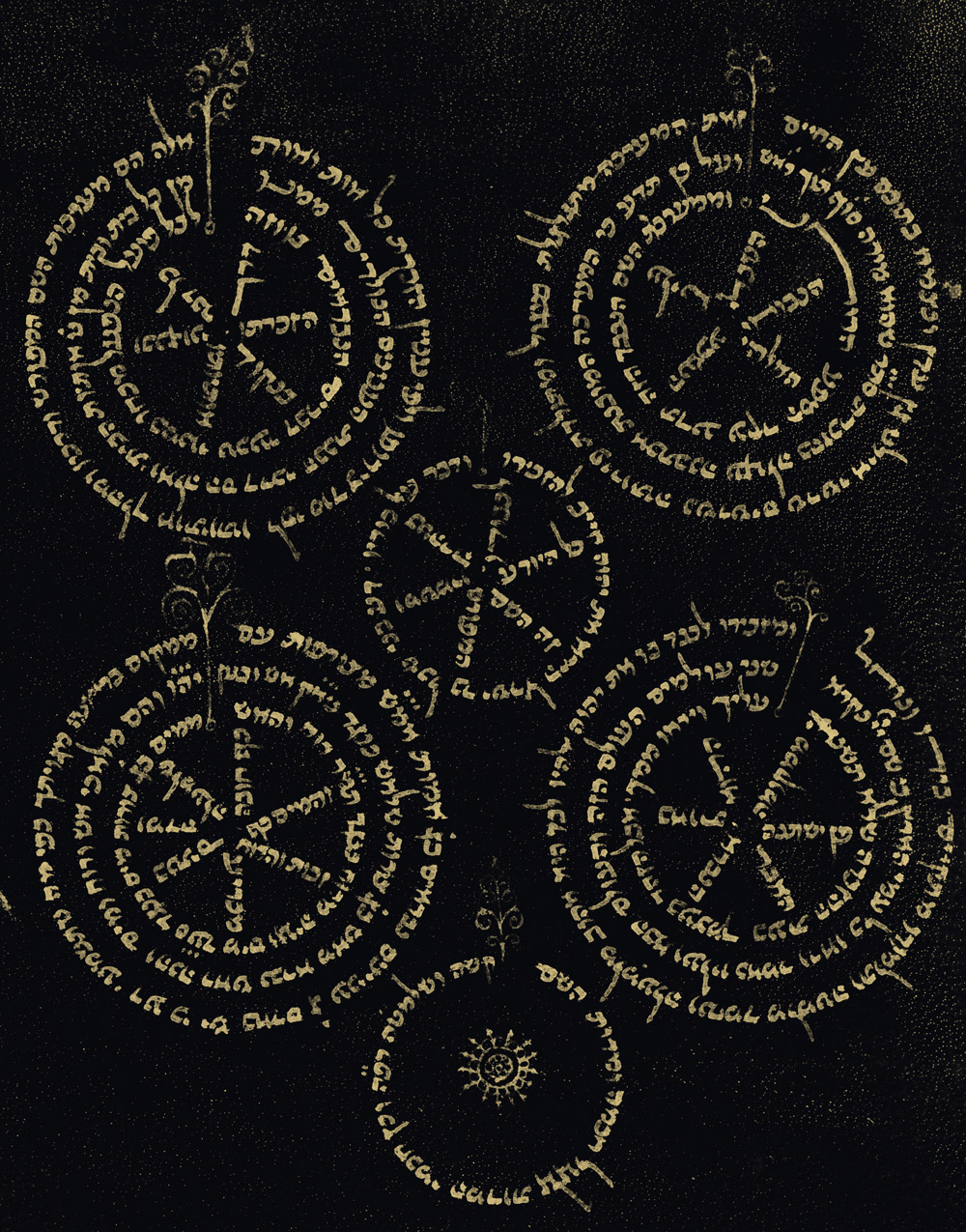
The Hebrew syllables are usually chanted with prolonged vowels and in other methods developed by Abulafia, even with repetitive head movements in the shapes of the "nekudot", the "vowel points" that adorn the Hebrew consonants. The important kabbalist work "Zohar" refers to the letters of the Hebrew alphabet as " the body" and the vowel points as their "animating spirit."
Although this Jewish mantra technique was developed much later it is based on Jewish mysticism contemporary with the Helleno-Kemetic times. We can find some direct parallels to how the Hellenic and Kemetic philosophers conceptualized the seven Greek vowels:
Egyptian priests claimed Greek vowel sounds as the divine inheritance of Thoth, while Greeks turned the same vowel sounds into the visual insignia of cosmic forces.5
And the tones of the seven spheres, each of which by nature produces a particular sound, arc the sources of the nomenclature of the vowels. These are described as unpronounceable in themselves and in all their combinations by wise men since the tone in this context performs a role analogous to that of the monad in number, the point in geometry, and the letter in grammar. However, when they are combined with the materiality of the consonants just as soul is combined with body and harmony with strings—the one producing a creature, the other notes and melodies—they have potencies which are efficacious and perfective of divine things.6
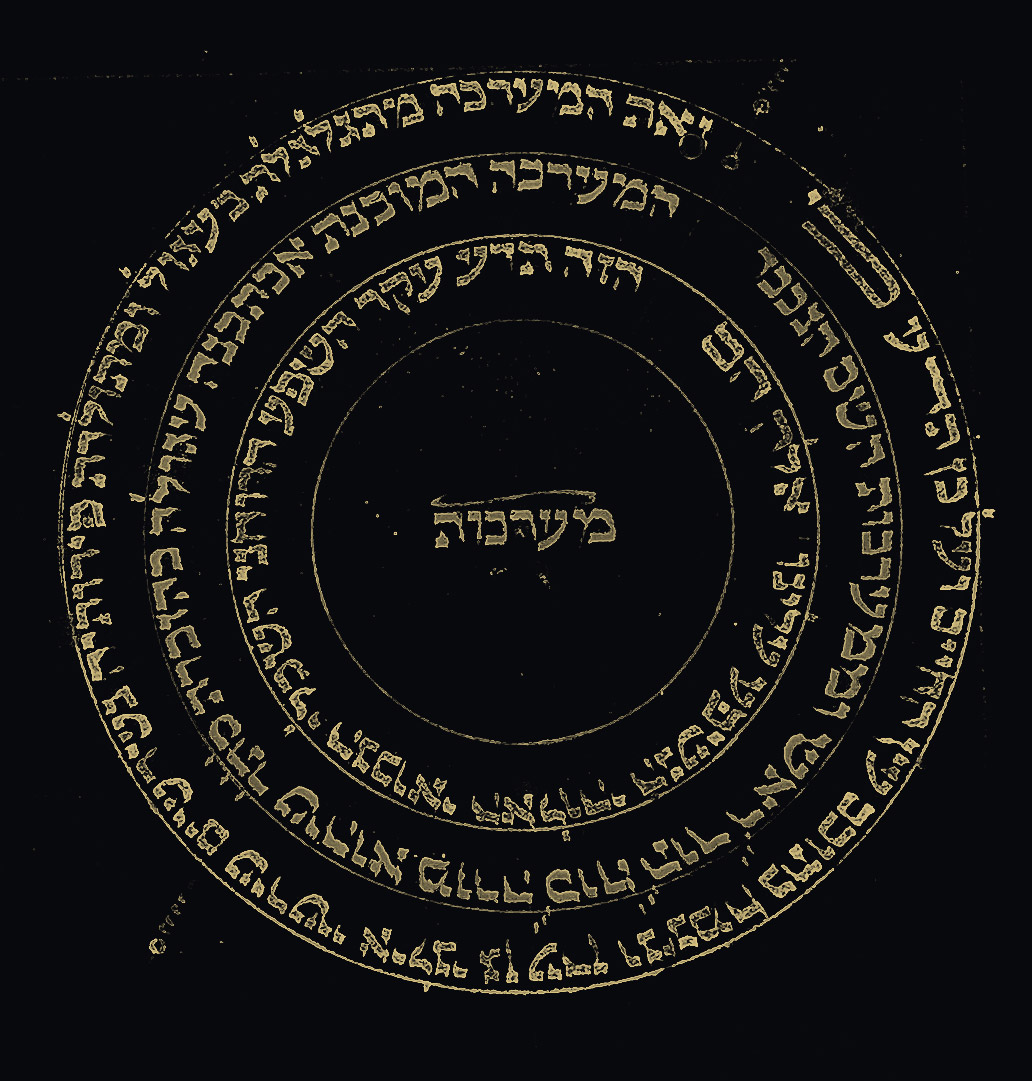
Descent Into the Heart
In Eastern Christian Orthodoxy there is a very rich tradition of contemplative practice from the Byzantine Empire to the Middle Ages called "hesychasm" that has been documented mainly in a theological anthology called "Philokalia":
Try to enter your inner treasure-house and you will see the treasure-house of heaven. For both the one and the other are the same, and one and the same entrance reveals them both. The ladder leading to the kingdom is concealed within you, that is, in your soul. Wash yourself from sin and you will see the rungs of the ladder by which you can ascend thither. (St. Isaac of Syria, Philokalia)7
Wisdom moved by the Spirit is, according to theologians, the power of mental, pure, angelic prayer; a sign of this is that during prayer the mind is free from forms, with no image either of itself or of anything else appearing even for an instant, since it is drawn away from the senses by the light acting within. For then the mind is removed from everything material and is like light, being ineffably merged with God into one spirit. (St. Gregory of Sinai, Philokalia)8

Let us take a look at a description of a late Byzantine technique of hesychasm:
For Jesus, God and Son of God, if constantly and diligently invoked by us, [...] does not let [the demons] present any kind of image in the mirror of our mind, nor to say a single word to the heart. If no kind of image finds its way into the heart, then, as we have said, it will also be empty of all thought. For it is through thoughts that the demons habitually hold secret converse with the soul and incite it to evil. Thus ceaseless prayer keeps our mental air free from the dark clouds and winds of the spirits of evil. And when the air of the heart is pure, there is nothing to prevent the Divine light of Jesus shining in it, as long as we are not puffed up by pride, vanity, conceit and a boastful showing off, and we do not strive towards the unattainable and are not therefore deprived of Christ's help. For Christ, being the image of humility, hates all those things. (Hesychius of Jerusalem, Philokalia)9
Ceaseless prayer keeps the air of the heart pure. But what is the "air of the heart?" Another section in the "Philokalia" makes this clear. Here a lesson from Nicephorus:
You know, brother, how we breathe : we breathe the air in and out. On this is based the life of the body and on this depends its warmth. So, sitting down in your cell, collect your mind, lead it into the path of the breath along which the air enters in. Constrain it to enter the heart together with the inhaled air, and keep it there. Keep it there, but do not leave it silent and idle; instead give it the following prayer: "Lord, Jesus Christ, Son of God, have mercy upon me." Let this be its constant occupation, never to be abandoned. For this work, by keeping the mind free from dreaming, renders it unassailable to suggestions of the enemy and leads it to Divine desire and love. (Callistus & Ignatius, Philokalia)10

Focus on breathing and lead the mind into the heart, ceaselessly keeping it busy with prayer to the Lord.
You must descend with your mind into your heart. At present your thoughts of God are in your head. And God Himself is, as it were, outside you, and so your prayer and other spiritual exercises remain exterior. Whilst you are still in your head, thoughts will…always be whirling about like snow in winter, or clouds of mosquitoes in the summer…. All our inner disorder is due to the dislocation of our powers, the mind and the heart each going its own way. The mind must come to an initial concord with the heart, growing eventually into a union of the mind with the heart. (St. Theophan)11
The Coptic Connection
Although the Byzantine monastic traditions of hesychasm can be traced back to the Coptic desert fathers of very early Christianity in Egypt, the ascetic practice of sitting in silence was never part of Coptic tradition and has also not been adapted at later times. Repeating the Jesus Prayer and other short "arrow prayers" was already a developed technique in monastic circles. Another central feature of prayer in the Coptic Church is that the body is continuously involved in various actions during prayer to counter the dualistic separation of the praying soul and body. Besides simply praying while working and being engaged in other common human duties, also more formalized prayer techniques involving the body are essential in Coptic worship. Both mind and body participate in the incarnation, death and resurrection of Christ.
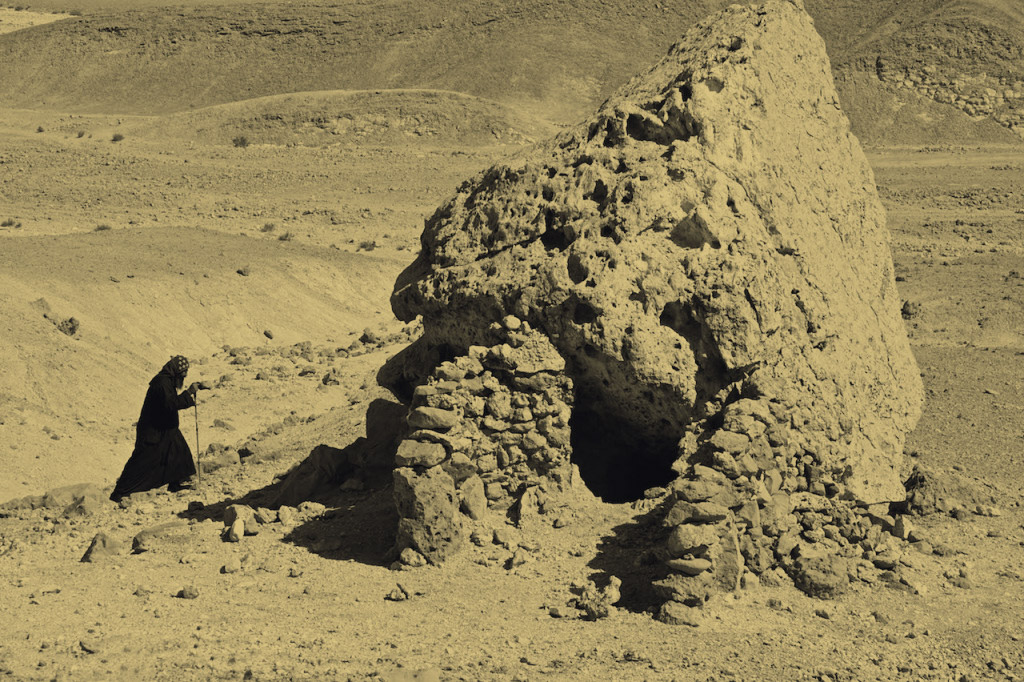
Standing facing the East is the most frequent prayer position. The person praying usually holds his or her hands outwards in the ‘orans‘ position, which is a common Christian position of prayer, frequently portrayed in ancient Christian art, including in Coptic iconography. [...] The second main position is bowing, of which there are two kinds: a quick bow, and a profound bow. [...] Two sorts of prostration, too, can be observed: one frequent, and the second reserved for adoration. In the frequent kind of prostration, the person begins by crossing himself. The person then holds both fists at a ninety degree angle to the body. Both thumbs are on the top of the fists, making the impression of the cross itself on the hands. The person then prostrates by kneeling down, and then moves the head down to touch the ground, while the knuckles and both thumbs touch the ground. [...] The second kind of prostration is liturgical and the person does not rise up immediately. This prostration is one of adoration. [...] In this way, standing, bowing, and prostrating for prayer transform the body into a medium to express the Lordship of Jesus12.
Other unique aspects of Coptic orthodoxy are the preservation of their late pharaonic Demotic dialect as liturgic language and direct adaptation of ancient Egyptian ritual practices into a Christian framework that has been passed on until today. According to the Alexandrian philosopher Philo (1st century AD), the early Christians had borrowed Ancient Egyptian music and styles of chanting into their practice. Echoing the supplications of the ancients Copts still chant seasonal prayers asking God to bless the annual flood.
The Egyptian musicologist Ragheb Moftah worked to preserve, document and record the ancient ritual and liturgy of the Coptic (Egyptian) Orthodox Church. He said:
It should be remembered that the Copts are the direct descendants of the Ancient Egyptians, who possessed a very ancient musical tradition, and from early times worshipped their gods with hymns and music and elaborate rites. [...] Demetrius of Phaleron, the librarian of the Library of Alexandria in 297 B.C., reports that the priests of Egypt used to praise their gods through the seven Greek vowels which they used to sing one after the other; and, in place of the flute or the harp, the utterance of these vowels produced a very agreeable sound. The music of many of the Coptic hymns is still entirely chanted on the one or other of these seven vowels. The text of certain long chants may consist of only one verse, or merely a single word like Alleluia.13
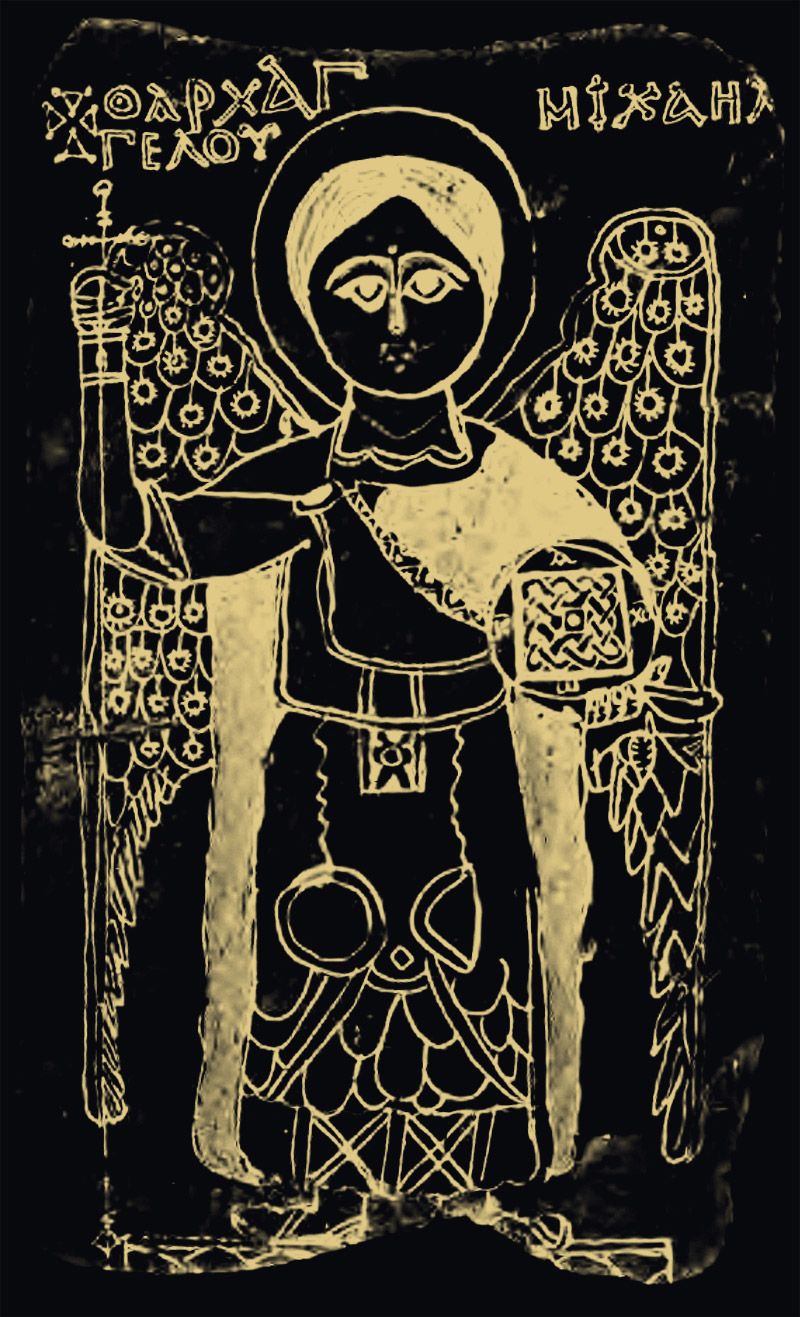
Here is a quote by a Belgian composer and music critic describing the characteristic Coptic vocal extensions, repetitions of vowels and syllables and improvised embellishments:
We could provide many examples of it, but one will suffice; we take it from a Hymniary of the churches of the Orient. Here it is: Aga a a a a a aaté é é é é mara ky y y ri i i i i ou. The musical phrase placed on these words is very long: these repetitions of a a a a a, é é é é, y y i i i, which require for each one an articulation of the throat, produce a ridiculous effect. The Copts exaggerate this kind of monstrosity not only by repeating the vowels, but by repeating the first and second syllable of the word several times, and by starting this word again without having finished it, until at last they end it. It is in this way that they lengthen their chants to the excess: a few words are enough for their interminable sequences of sounds, and one can grasp the meaning only with extreme difficulty.14
Here is a video example of the the Good Friday hymn 'Πεκ'θρονος' which is Coptic for 'Your Throne.' Its words are taken directly from Psalm 45:6: “Your Throne O God, is forever and ever.” In Coptic, this translates into a mere eight words (including a final "Alleluia"); and yet in most churches, the hymn takes more than twenty minutes to chant15. The hymn’s length is a result of way it hangs on each and every vowel. the music of the hymn was chanted by the Ancient Egyptians to express their grief for the dead separating from them, which is evident in the first half of the hymn. With this music also, they rejoiced that the deceased had bordered the Sun-Ship that would take the soul to the god Ra to grant it eternal life. The joyous music is evident in the second half of the hymn16.
Imam Tehuti
Let's take a brief look at Islamic mysticism. There is a controversy about the question whether 'Sufism' is a purely Islamic tradition or has been influenced by Christian monastic practices. The latter is quite likely17, but the influences might actually even be older.

A Sufi practice that seems very similar to hesychast prayer is that of Dhikr or Zikr (ذِكْر "reminding oneself"), devotional acts, in which short phrases or a variation on the name of god are repeatedly recited silently or aloud. Analysing the similarities and differences of Orthodox Hesychasm and Sufi Dhikr practices scholar Samira Awad Melki concludes:
The basic character of Hesychasm, like the basic identity of Sufism, points to the same way, is hindered by the same obstacles, and leads to the same intentions, regardless of the dogmatic differences. [...] The practice of the Jesus Prayer in Orthodox Christianity and Dhikr in Islam, as two methods of prayer that bring people closer to God, are similar in the method and means and they developed in mutual influence. Much of the language among the Hesychasts as among the Sufis is similar due to the contact between the two groups, and because of the similarity in the religious experience lived bv the Hesychasts and the Sufis.18
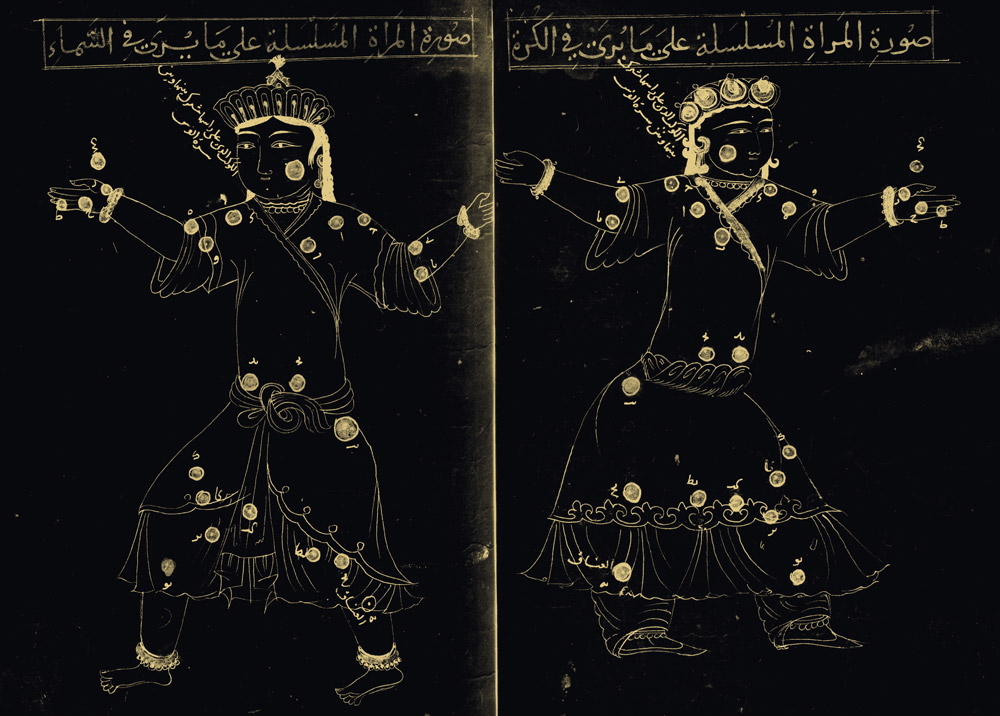
An influencial early (9th century) master of Sufism was the Persian Muslim scholar Sahl al-Tustari (سهل شوشتری) who provided an important theoretical foundation for the Sufi exercise of Dhikr. Tustari himself was heavily influenced by ideas of the Sufi saint Dhū'l-Nūn Abū l-Fayḍ al-Miṣrī (ذو النون المصري) who is considered as the originator of the aspects of Sufi discourse concerning sainthood (awliyāʾ), spiritual states (aḥwāl) and the various stages a Sufi's soul must attain in its search for God (maqāmāt).1920 Al-Miṣrī was born in Upper Egypt in 796 and is said to have made some study of the scholastic disciplines of alchemy, medicine, Greek philosophy and the Kemetic hieroglyphs. It can be assumed that Al-Miṣrī was quite knowledgeable of Hermetic philosophy and older Kemetic traditions which he weaved into the early philosophies of Islamic Sufism.20
An especially powerful form of Dhikr is the Hadra (حضرة "presence"), an ecstatic group ritual that involves repetitive chanting and sometimes drumming, music and dance. Like Coptic practices the Hadra is a very embodied form of prayer. It is not practiced among all Sufi orders, but especially popular in North Africa, the Middle-East and Turkey.
It is said by the Sufis that at the beginning of the hadra, we do the dhikr, but in the second part Allah Himself does it and we are spiritually taken over—we are no more, we have been annihilated in Allah. Afterward, in the calm that follows such a vibrant storm, someone recites the Qur’an in the most gorgeously melodic way, which is like cool water from a mountain spring poured over us to flow throughout our limbs and consciousness. A person of some wisdom and experience (everyone usually knows who this is in any gathering) then gives a teaching, again not a scholarly discourse, but one that seems to have come on the wind, from the heart of the speaker as well as from all those present, filled with the wisdom of the Prophet Muhammad, peace be upon him, and his almost palpable presence among us, and all the teachers over the centuries that have proceeded from him.21
Here is an entrancing video of such a performance:
Decolonizing Sophia
We can safely summarize that the methods of chanting or cycling vowels or words of power were paramount in all three, the Jewish, Christian, and Islamic mystical traditions of contemplative practices and likely influenced by earlier ones. The technical goal of all of the discussed methods was to descend one's mind into the heart.
Although the different techniques of attaining that goal were mostly developed much later, their underlying philosophies are entirely in line with ancient Kemetic concepts of the heart:
It was regarded as the spiritual centre of a person, the place where a person would come closest to his or her ka. [...] For, as the organ in the body most associated with the spiritual self, the heart was essentially pure. It was therefore considered necessary to protect the heart from corrupting influences or tendencies. We thus find admonitions to “conceal” or to “seal” the heart. This idea of the essential purity of the heart is linked to that of the heart as the source of a person’s being. [...] The heart, then, was a part of oneself that ultimately could not be identified with any of the desires, decisions, or actions that were out of tune with maat. The heart was the incorruptible core of a person, and thus detached enough from all that was mundane in them to stand as witness against them. [...] Horus ["mind"], to the ancient Egyptians, was the earthly image of Ra: the radiant source of light physically embodied. And the place where Horus came to reside in the initiate’s psychophysical organism was the heart.22
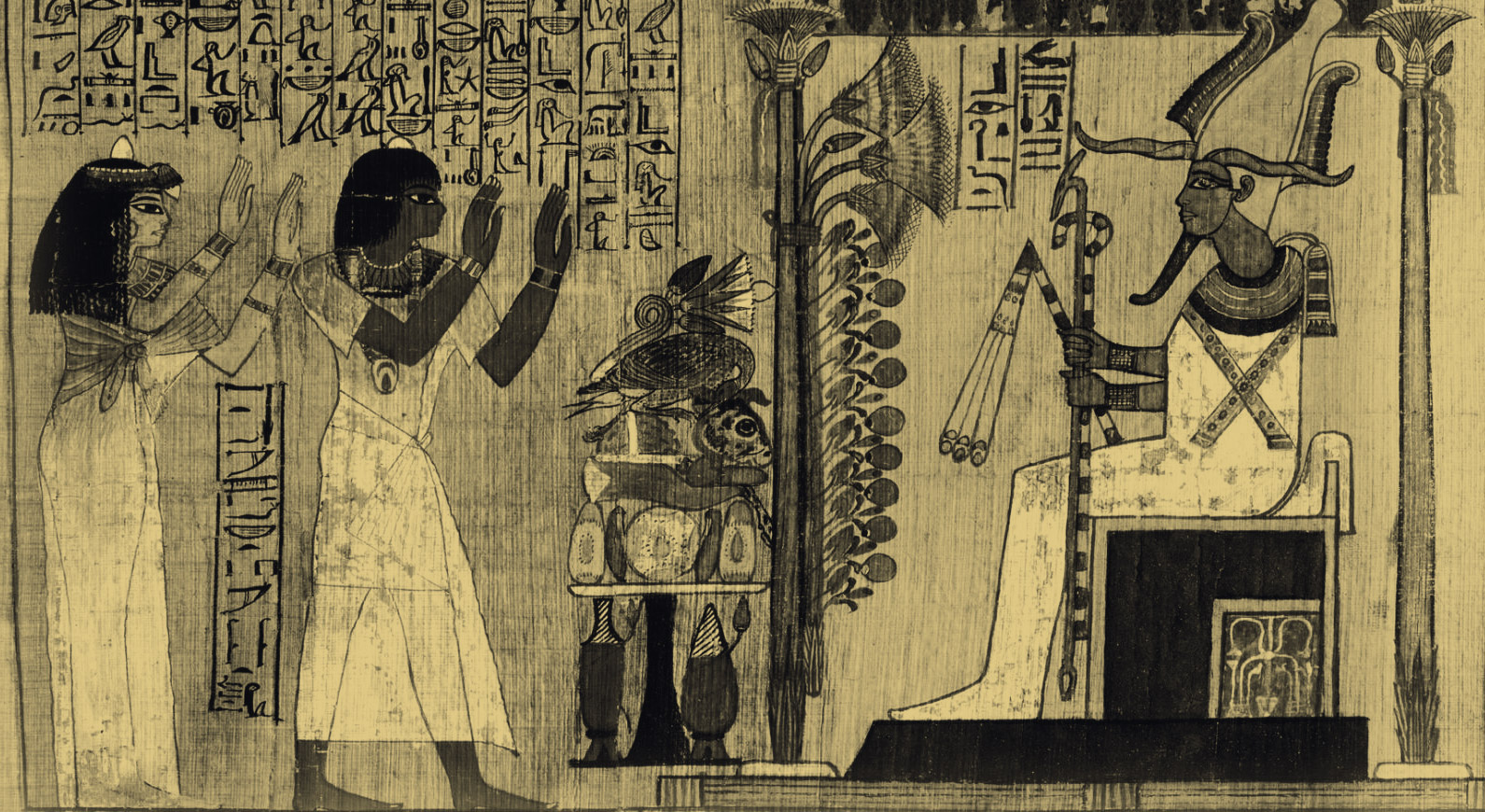
Spell 30B from the Ancient Kemetic Book of the Dead is a petition to one's own heart:
My heart of my mother, my heart of my mother, my breast of my being, stand not against me as witness, oppose me not in the Council. Outweigh me not before the keeper of the balance. Thou art my spirit that is in my body, Khnum who makes sound my limbs. When thou goest forth to the goodly place prepared for us yonder, make not our name to stink to the courtiers who create mankind in (his) place, that it may be well for us and well for the Hearer and that the judge may be glad. Think not up lies (against me) beside the God in the presence of the great God the lord of the west. Behold, thy distinction as a triumphant one is (involved).23
Many of the theological concepts of the three Abrahamic religions seem to be deeply influenced by syncretic Hermetic and even Kemetic ideas. Sometimes the similarities are quite striking. For example the congruity of the Hermetic principle "as above, so below" with Sufi doctrine described by Jaʿfar ibn Muḥammad aṣ-Ṣādiq (جَعْفَر ٱبْن مُحَمَّد ٱلصَّادِق):
Man is the microcosm, creation the macrocosm — the unity. All comes from One. By the joining of the power of contemplation all can be attained. This essence must be separated from the body first, then combined with the body. This is the Work. Start with yourself, end with all. Before man, beyond man, transformation.24
But aside from the influences and similarities and prevalent romantization of alleged "Egyptian roots" of the Western mystical traditions I think it is essential to acknowledge that the Kemetic culture was actually quite alien to the cultures that have colonized Kemet and appropriated their wisdom. I don't mean mere cultural differences, but a radically different epistemology. Generally speaking Kemet was fundamentally Afrikan and it's citizens "worlded" with an Afrikan mindset. So did (and do) the Christianized and later Islamized communities that emerged out of the ancient empire's ruins.

Afrikan studies scholar Vernon J. Dixon termed the epistemology "affect-symbolic imagery" as opposed to the "object-measure cognition" prevalent in European cultures:
Affect refers to the feeling self, the emotive self engaged in experiencing phenomena holistically; in other words, putting one’s self into the experience and not separating one’s self from the totality of the phenomena. Symbolic imagery is the use of phenomena (words, gestures, tones, rhythms, objects, etc.) to convey meaning. In other words, one takes a single phenomenon and formulates alternative ways to conceptualize that phenomenon. As people engage themselves (mentally, physically, and emotionally) into the experience of symbolic imagery, they are personalizing their way of expressing meaning.
In contrast, the epistemological perspective from a Eurocentric cultural orientation is object-measure cognition. That is, European/European Americans know phenomena through counting and measuring. If a phenomenon cannot be counted and measured, then the phenomenon does not exist. The separation of self from the phenomenal world is the method of cognition that enables one to know reality. In sum, the phenomenon must be physically observable, tangible, and manipulable for one to know and experience it. 25
Kemetic people were much more immersed in a holistically magical perception of reality than the more "left-brained" European and Middle Eastern colonizers. As Schwaller-de-Lubicz has pointed out26, they worlded with a suprarational mindset he called "symbolic" in contrast to the European "mentality of complexity."
Every action, no matter how mundane, was in some sense a cosmic corresponding act: plowing, sowing, reaping, brewing, playing games—all were viewed as earthly symbols for divine activities. [...] In Egypt, what we now call religion was so widely acknowledged that it did not even need a name because it is life itself, in all its aspects.27
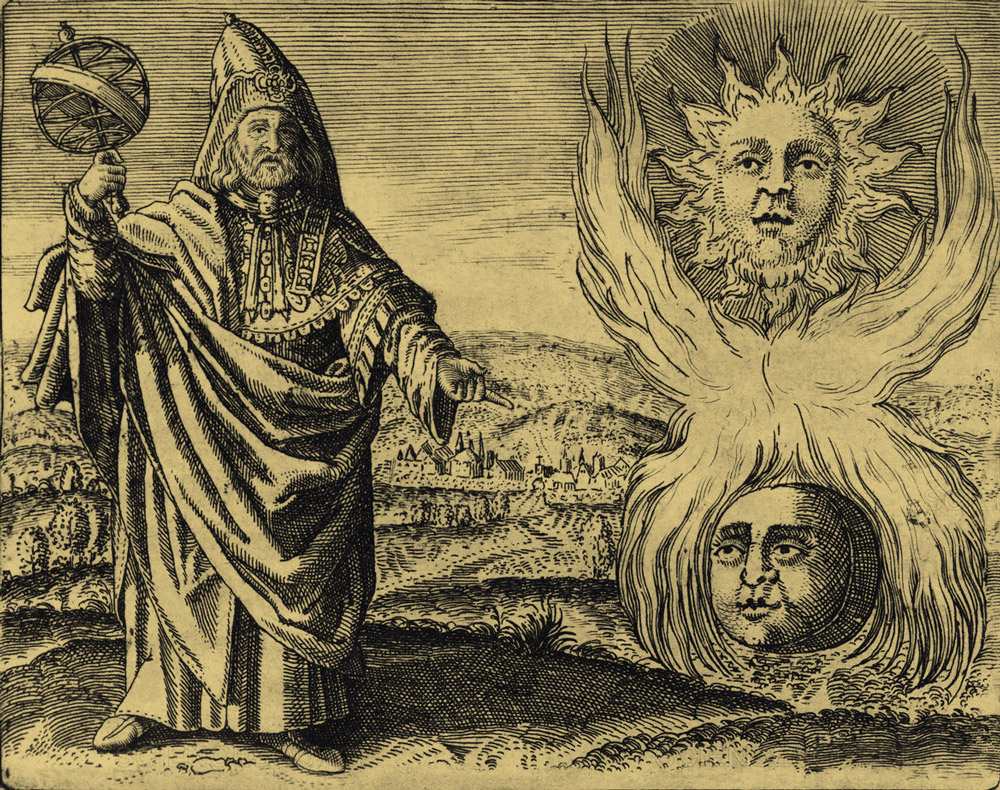
The endeavour of Hermetic philosophy is a perfect example of an attempt to translate an incompatible Kemetic epistemology into a recognizable way to the Hellenized mentality by systematizing moral teachings.
there are some differences between the Egyptian instructions and philosophical Hermetica. Egyptian wisdom is ethical, social and engaged with current life here and now. The Hermetica are individualistic, theological, reflective and invoke the inner, mystical initiation during life on Earth. They also show an influence from Dionysian and Orphic traditions. Moreover, Hermetism is ascetical and rejects matter and the world.29
In a Hellenized and later Romanized Kemetic society the need for getting oneself into the right mindset for religious or magical practice probably became more and more important as the foreign mindset of "object-measure cognition" became more prevalent. The Helleno-Kemetic sages seemed very aware of the clash of their worldviews and still persisted in trying to find a common ground by not even attempting to translate magical or philosophical concepts from one into the other but entangling or superimposing them. One of these way was probably the use of barbarous words.
Here is a quote by Iamblichus :
For, since the gods have shown that the entire dialect of the sacred peoples such as the Assyrians and the Egyptians is appropriate for religious ceremonies, for this reason we must understand that our communication with the gods should be in an appropriate tongue. Also, such a mode of speech is the first and the most ancient. But most importantly, since those who learned the very first names of the gods merged them with their own familiar tongue and delivered them to us, as being proper and adapted to these things, forever we preserve here the unshakeable law of tradition.28 (De Mysteriis VII, 4)
The excessive use of "barbarous names" and vowel strings in Helleno-Kemetic magical and theurgical practice almost seems to have been a technique of trying to shift the Hellenized mind to a more "symbolic" perspective, but also an attempt of the Kemetic priests to prevent their sacred language and it's inherent magical powers to be lost.
The Egyptian perception of the superiority of their language is a premise of their magical thought. [...] Translation of original texts was taboo. It was a way to corrupt their true meaning, and by replacing the original Egyptian sound, the effect of the magic would be lost. Translating a sacred text could also mean giving the enemy the efficacy of the ritual word, since the word was not a mere expression but also an act. [...] Egyptian thought had no formal separation between mental and magical operations. Therefore, by talking about the power of the sounds made by Egyptian words, the subject of this criticism is not the Greek language as a symbol of Greek/foreign culture. What is in debate here is the magic and creative power of what one expresses by words versus philosophy. Philosophy was not able to produce any kind of transcendental effect as it was restricted to the use of words for the intellectual interpretation of the meanings and context of what has been written. [...] The major problem in translating Egyptian thought into Greek words is the Greek separation of reason and emotion as two distinct and even antagonist categories.29
To conclude this section, here is a quote illustrating the fated and difficult relationship between the Hellenes who had colonized the land of Kemet centuries after the Kemets had colonized the minds of the Hellenes:
the Egyptians were the first people to establish solemn assemblies, and processions, and services; the Greeks learnt all this from them. I hold this proved, because the Egyptian ceremonies are manifestly very ancient, and the Greek are of late origin30. [...] Further, the Egyptians said they first used the appellations of twelve gods which the Greeks afterwards borrowed from them; and it was they who first assigned to the several gods their altars and images and temples, and first carved figures on stone. (Herodotus, Histories. Book II)31

Weaving the Threads Together
Let's summarize the findings from all the rabbit holes we dove into in the sections above and use the insights for attempting to recover a Helleno-Kemetic system of concentration:
- In Western systems of meditation the heart aspect predominates, and the mind's subordination follows.
- Reconstructed Jewish techniques centered around syllable mantras that lead to states of "gnosis" and their focus on vowels matches Kemetic esoteric ideas.
- Byzantine Hesychasm teaches us the descent into the heart through ceaseless repetitions of mindful prayer. The Eastern Orthodox concept of the heart is very much in line with ancient Kemetic beliefs.
- Coptic practices show us ways to counter the dualistic separation of the praying soul and body by rejecting ascetism and embracing a more embodied form of prayer akin to older Kemetic temple traditions. Their chants also show quite probable prayer techniques of more ancient Kemetic origins.
- Islamic Sufi practices show many overlaps to Christian techniques and in combination with musical elements also turn it into ecstatic group rituals. Earliest Sufi masters were influenced by Hermetic and Kemetic ideas.
- There seem to be fundamentally different epistemologies between Afrikan and European peoples and their encounters and interactions with the divine that are reflected in the different practices.
As Within, So Without
The sensual experiences of actually performing spells from the Anastasi Handbooks raise the question to what extend the purpose of the voces magicae was evoking "external" powers or an "internal" meditative one to focus or entrance the mind - probably both ("as above, so below"). Aside of manifesting magical will in the shape of spells by means of one's voice out into the universe, vibrating barbarous names seems to noticeably open one's gates to an influx of daimōnic powers into the soul.
Putting Helleno-Kemetic spells into praxis, soon one is confronted with the question of how exactly to "vibrate" the barbarous words and vowel sequences. Simply reading them out loud feels a bit awkward at first, but when you start to "chant" them, they start to unfold quite some power - especially the vowels. Closing one's eyes while doing so reveals that the vowel sounds resonate in parts of the body and the sensations range from soothing and calming to entrancing. The seemingly nonsensical nature of the utterances really intensify the sense of a shift from the mundane human world to a more blurry, enchanted, daimōnic reality in which the building-blocks of the universe dissolve into warped fields of vibration and volatility.
Trance can be described as the deconstruction of ordinary perception as well as the habitus of quotidian interactional patterns and customary organization of time, all in order to empower the subject to experience the accustomed life-world in a more vital manner. In more political terms, [...] the ordinary frames of reference can be read as semihypnotic interpolation of social beliefs. In other words, we are speaking of a kind of power struggle between two forms of trance contesting the field of individual consciousness. [...] merging the horizons of religious theory, anthropology, hypnotic theory, and microsociology can provide a flexible yet clear working definition of shamanic experience: movement beyond habitual frames of reference, as a transformative process, culminating in return to these frames in pursuit of revitalization.32
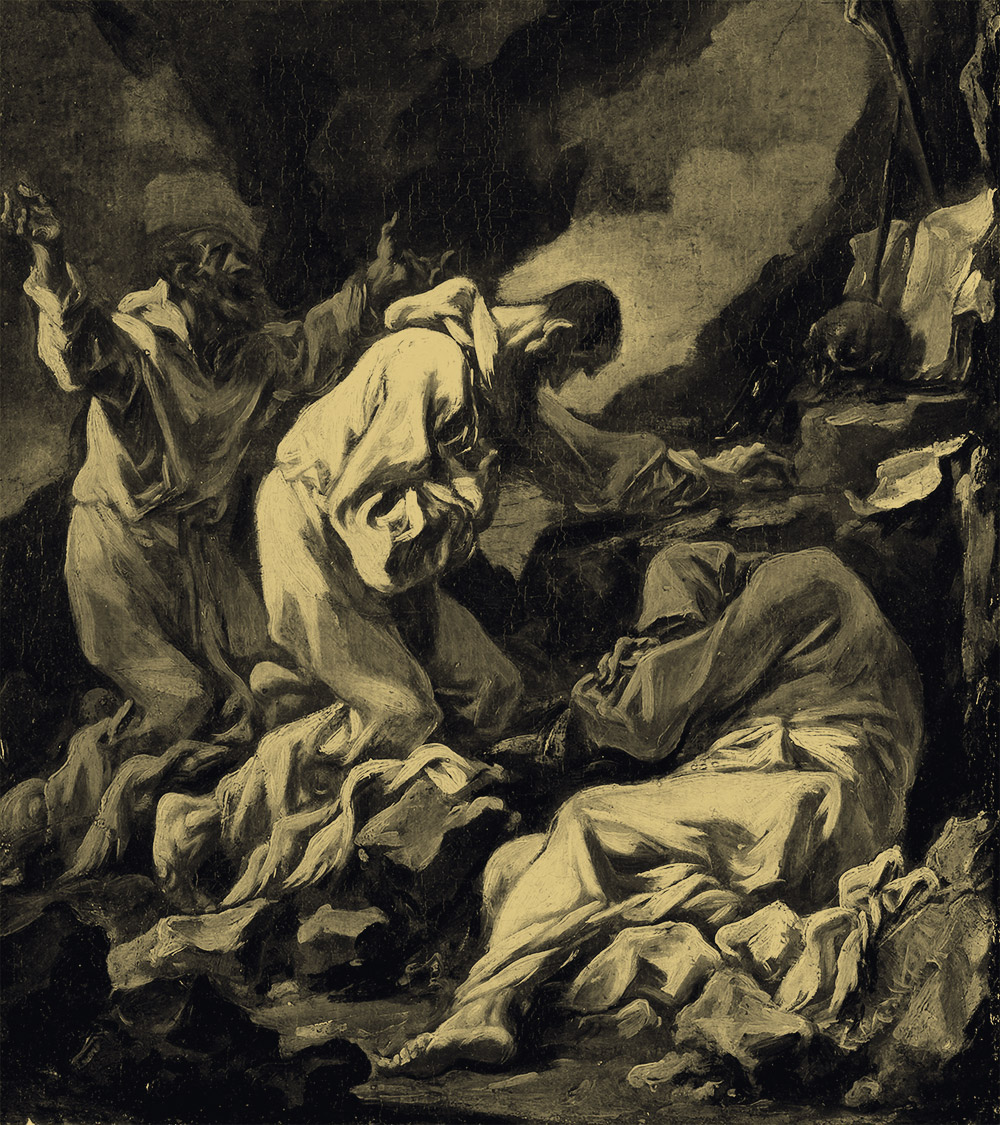
Here is a quote of a blog article by fellow mage Pentamegistos about his own practice of repeating vowel sequences in a mantra-like fashion:
Not only do they impel the mind to transcend any lust of result, they draw the attention of the force invoked, or perhaps, to echo Iamblichus, they elevate our souls such that they mirror the those very powers, allowing for direct communication or even systasis therewith. [...] Now, it goes without saying that mantric vibration is but one component of successful magic, but a cardinal one nonetheless. [...] I can provide countless examples of how this approach has transformed my magical life. The first time I achieved direct communication with a Deity was after vibrating its name continuously for over an hour, after which the veil finally opened so to speak.33
Even more perceptible power can be added by intoning simple melodies on the vowel strings. There are various musical theories out there assigning each vowel a certain pitch. Joscelyn Godwin34 went into much depth of research and experimentation about the musical mysteries of the vowels, but concluded:
It is certainly an attractive idea, that the vowel-sequences encode a secret song. But if this is so, then it must be said that the Greeks nowhere else chose to notate their music in this clever and convenient way; and that even if this was an exception, it is very unlikely that any modern readings agree with ancient practice.34
Instead of the quite technical activity of matching pitches with vowels I found it much more aestetically pleasing and much more practical in a ritual context to improvise a melody. It works especially well with the type of melodies used in Coptic monastic chanting. It feels quite powerful. Let's return to "Holy Daimon" where Frater Acher talks about this forgotten power of singing as a magical practice:
Singing a statement of magical intent can grow to become one of the most powerful and immediate forms of magic open to us. Spirits love (or depending on the song and their nature, fear) listening to the voice of humans. The human voice, if used well, is capable of creating all-vibrating rays of power that can stir, sublimate, or separate spirit and substance. And most importantly, the physical human voice is something entirely out of the reach of spirits. The spoken word is the sword blade of the magician. It forms the bridge between the realm of the spirits and the realm of matter. It is itself a hybrid power, half born from flesh, half born from spirit. Singing—making our voice carry particular melodies and vibrations that express intent not only in the words spoken but also in the meaning of the melody—is a force not many beings or objects in creation can resist.3
Baboon Beatitude
While it is common magical practice to "vibrate" voces magicae monotonously or chant them in a liturgical sense, in some cases the Anastasi Handbooks are very explicit about the way the magical language is supposed to be uttered. This involves imitating sounds of animals, most prominently falcons or baboons.
In PGM IV, 1002-1006 after a vowel sequence "α εε ηηη ιιιι οοοοο υυυυυυ ωωωωωωω" the scribe noted "speak as a baboon," PGM V. 1-53 says to pronounce the letter Eta "like a baboon," in PGM XIII. 1-343 the name "Abrasax" is described as "baboonic" because his "name is hidden and unspeakable, it cannot be uttered by a human mouth." The same text also says "he who appears on the boat rising together with you is a clever baboon; he greets you in his own language."
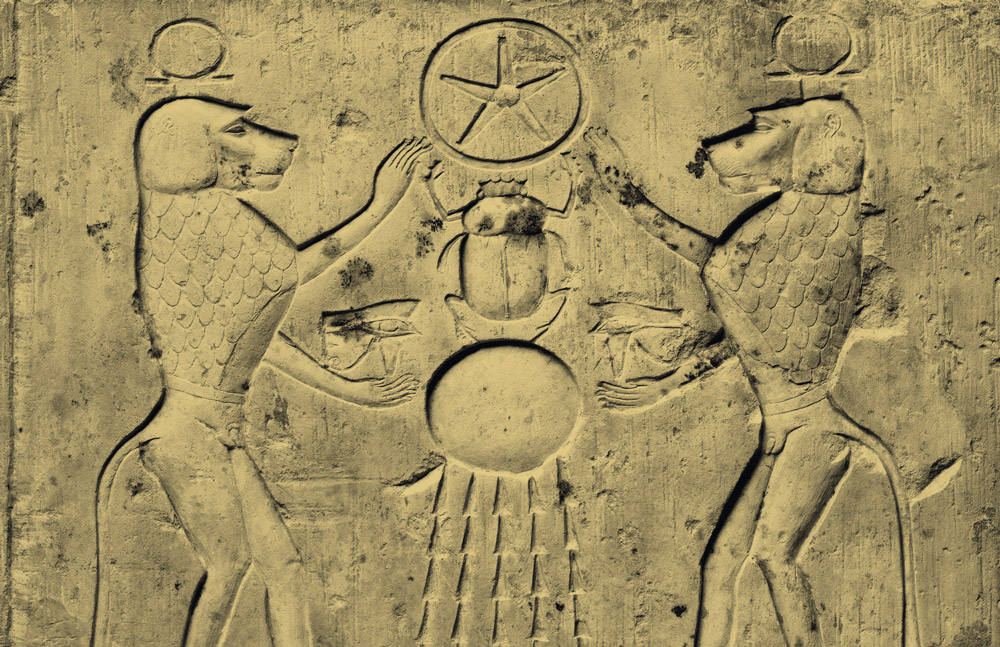
The baboon on the boat is of course Tehuti (Thoth) the Kemetic Hermes, scribe of Phre, and most importantly demiurge who created the world from utterance. In "Philebus" Plato goes into detail about this role:
Some god or divine man, who in the Egyptian legend is said to have been Theuth, observing that the human voice was infinite, first distinguished in this infinity a certain number of vowels, and then other letters which had sound, but were not pure vowels; [...]; and observing that none of us could learn any one of them and not learn them all, and in consideration of this common bond which in a manner united them, he assigned to them all a single art, and this he called the art of grammar or letters.35
In a Ptolemaic liturgical funerary papyrus36 Tehuti explains himself:
I am Tehuti and I speak to you in the language of Phrē anew, for it was spoken to you even before my words were heard.
I am Tehuti, lord of divine speech, He who sets things in their proper place.
I render divine offerings to the Gods, invocation offerings to the Akhu.
I am Tehuti, He who grants Ma'at to the Ennead and all that comes from my mouth is made manifest, just as what issues from the mouth of Phrē.
I am he whom none can expel from heaven or earth, for I know what is hidden in the heavens, what is inaccessible on earth, hidden in the Nun.
I am the creator of heaven, I am he who formed the mountains, I am he who creates the stream by means of thought, who creates the arms of the river, and when I bring forth the flood, I fertilize the fields, giving life unto Gods and men. Hearken O Gods! Hear my words which are the words of Phrē himself.
Besides the role of manifestations of Tehuti, baboons were highly respected in Kemet. The grunting sounds of baboons sound very similar to human vowel sounds, as even scholars of acoustics have demonstrated37. The shouting of vowels in combination with what appear as singing and dancing with raised forepaws, especially upon sunrise put them in high regard as "ideal and true performers of religion. A human being, even the pharaoh, was at best only an imitator of baboons".38
The vowel language of the baboons was considered secret and sacred and the original primordial language, so it makes sense to imitate their utterances as as closely as possible for magical efficacy. In the next sections let's take a closer look to the secret meaning of the "shudderful names" uttered in this original language.
Coefficient of Weirdness
I am the name of the sound and the sound of the name
I am the sign of writing and disclosure of difference39
In "Das Alphabet in Mystik und Magie", Franz Dornseiff pinpoints the beginning of the use of vowel variations to the end of the 19th Kemetic dynasty (around 1150 B.C.)40. He concludes that a probable reason for the vowel combinations was the magical practice of seeking a deity's "real name" beyond their given name that ususally does not come close to their true essence in a limited human alphabet and language41.
For anyone who speaks in a tongue does not speak to people but to God. Indeed, no one understands them; they utter mysteries by the Spirit. (1 Corinthians 14:2)
Dornseiff also notes that one should not forget that not all magicians were pious idealists, some also made up gibberish on the fly, because they had paying customers41. While I agree with the notion that practicing magicians who served paying customers probably did add some more than necessary trickery and pomp to their public displays of magic, I don't think they took the effort of noting down long vowel sequences of spontaneously made up gibberish while at the same time noting a mere "do the usual" all over their handbooks. No, it seems more probable that the vowel sequences we can find in the PGM have an underlying logic to them.
Before discussing ideas for a possible logic of the vowel strings it is important to note that even if they would be "mere gibberish" the "nonsense" in their literal wording has potential to carry magical force especially through its weird daimōnic alien-ness. The language of man being twisted and distorted until the borders to the "other" dissolve:
But that written word is an alphabetical fantasia, and it is precisely here that magical language preserves the Platonic conundrum that living language, which cannot be captured by writing, is itself a kind of writing! By writing the name of God, the ultimate form of living discourse, in jumbles of letters that do not make sense, these texts show that it is really ordinary writing that is scrambled and confused, a mere imitation of another kind of inscription. Magical writing takes the form of ordinary writing by using its letters and so is faithful to it, but it betrays that writing by its nonsensical use of those letters and is thus faithful to the writing that is an invisible inscription on the soul. Yet it betrays the invisible inscription as well by writing it in actual letters! Magical language is thus thoroughly paradoxical, betraying and safeguarding with every vowel. It carries forward the Platonic sensibility in a radical way.42
The anthropologist Bronislaw Malinowski coined the term "coefficient of weirdness" to describe the "nonsense" in magical language. Although he used it for his own research on the magic of the Trobriand islands of Papua-New Guinee, his insights have an immense value also for our area of enquiry:
A spell is believed to be a primeval text which somehow came into being side by side with animals and plants, with winds and waves, with human disease, human courage and human frailty. Why should such words be as the words of common speech? They are not uttered to carry ordinary information from man to man, or to give advice or an order. The natives might naturally expect all such words to be very mysterious and far removed from ordinary speech. And so they are to a large extent, but by no means completely. [... A] great deal of the vocabulary of magic, its grammar and its prosody, falls into line with the deeply ingrained belief that magical speech must be cast in another mould, because it is derived from other sources and produces different effects from ordinary speech [...] [A]ll magical verbiage shows a very considerable coefficient of weirdness, strangeness and unusualness. [...] The wording of magic is correlated with a very complicated dogmatic system, with theories about the primeval mystical power of words, about mythological influences, about the faint co-operation of ancestral spirits, and, much more important, about the sympathetic influence of animals, plants, natural forces and objects. [...] Since meaning is function within the context of situation and the situation of magic is different from that of everyday life, we might prima facie expect to find a magical language corresponding to this difference. Add to this the native belief that magic is prehuman in origin, that it existed underground before it emerged with the first ancestors and we should not be surprised if the magical formulae were composed of mere gibberish or nonsense words, concatenated according to a grammar of their own. If a word is believed to be effective, that is, to have a magical meaning, because it has had a different origin, a different history and a different place in language, then obviously its unusual, quaint character is well correlated with this belief. The mysterious and sacred words which are supposed to have a direct hold over reality need not conform to the rules of the grammar and word formations of ordinary speech.43
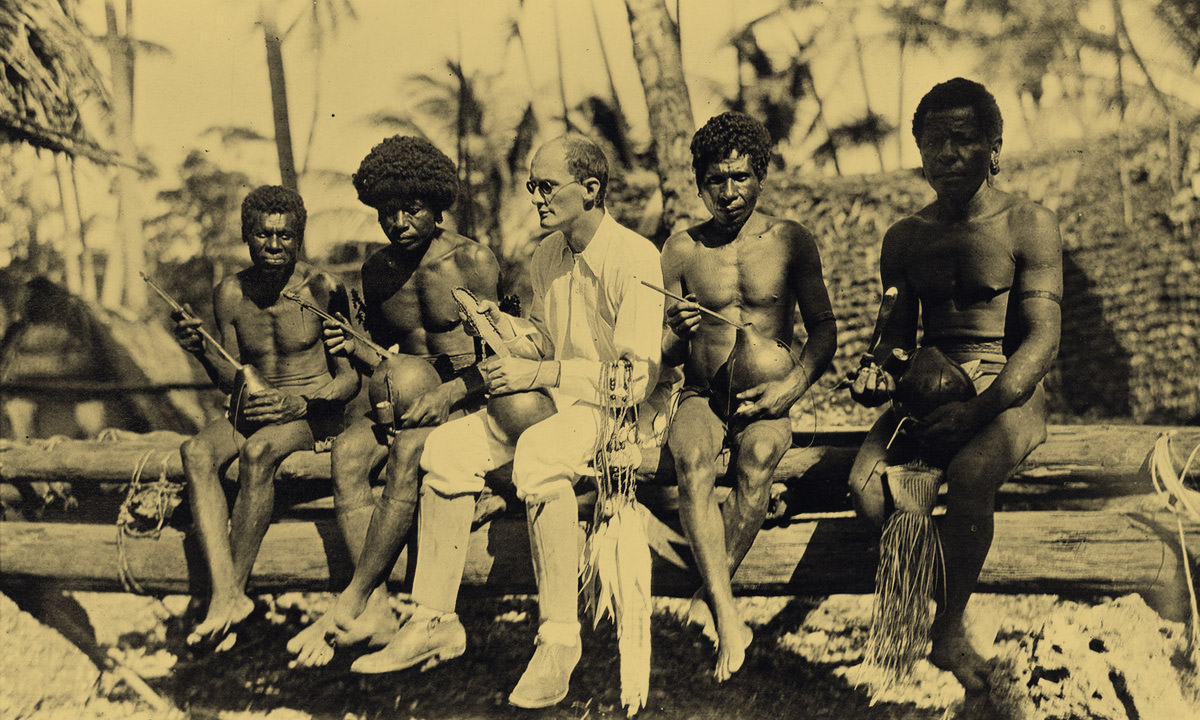
Various authors of late antiquity argued that normal human language was not appropriate in addressing higher beings or gods:
Homer already knew that there was a specific language of the gods, and despite centuries of human prayer in normal human language, the idea of a special divine language never completely disappeared from human imagination. In later antiquity it was believed that demons or gods understood the sounds of the voces magicae, even if the human producers did not. In other words, now these terms did serve communication but a communication that could only be understood by one of the two partners in the communication.44
In a similar fashion Iamblichus gave this statement:
It is essential, therefore, to remove all considerations of logic from the names of the gods, and to set aside the natural representations of the spoken word to the physical things that exist in nature. Thus, the symbolic character of divine similitude, which is intellectual and divine, has to be assumed in the names. And indeed, if it is unknowable to us, this very fact is its most sacred aspect: for it is too excellent to be divided into knowledge.28
Sonorous Sigils
In contrast let's look at some hypotheses about the vowel strings actually representing encoded meaning or intent: In some spells of the PGM we find powerful voces magicae with a notation of the amount of letters they are composed of and at the end of the spell a vowel sequence with a matching amount of letters. For example in the "Stele That Is Useful for All Things" (PGM IV. 1167-1226) of the "Great Magical Papyrus of Paris":
I invoke your hundred-lettered name which extends from the sky to the depth of the earth; save me, for you are always ever rejoicing in saving those who are yours, αθηζε φωι ααα δαιαγθι θηοβις φιαθ θαμβραμι αβραωθ χθολχιλ θοε οελχωθ θιοωημχ χοομχ σαησι ισαχχοη ιερουθρα οοοοο αιωαι (100 letters). (PGM IV. 1210ff)
and further down we find:
ιαω αιη ιωη ωιη ωιη ιη αιωαι αι ουω αωη ηει ιεω ηυω αηι αω αωα αεηι υω ειη αηω ιευ αεη ιαια ιαω ευ αευ ιαη ει ααα ιιι ηηη ιω ιωη ιαω (100 letters), for a blessing (PGM IV. 1222ff)
In the "Eighth Book of Moses" we find multiple references to a great name:
So your name is great and marvellous. I am βιαθιαρ βαρβερβι σχιλατουρ βουφρουντωρμ (36 letters) (PGM XIII. 520ff)
and here too we find a vowel-heavy phrase at the end of the spell:
say to the earth once and to the moon once, to water once and to sky once ωαωη ωω εοηιαω ιιι ααω θη θου θη ααθω αθηρουω (36 letters) (PGM XIII. 644ff)
The vowel sequences seem to explicitly correspond to the barbarous names, like daimōnic synonyms with a higher "coefficient of weirdness", spoken in a more exalted and primordial language of the gods. While the syntax is interchangeable, their meaning remains intact because the number of letters match up.
Another even more powerful method of such magical correspondence was the use of Greek "isopsephy" or "gematria": adding the numerical values of the characters of a string of text and encoding meaning through the numerical total. Words become magically entangled with each other when two or more words have an equal numerical value.

The Anastasi Handbooks are filled with barbarous names whose power derives partially from their numerical total. The most famous example is the name "Abrasax" whom the Kemetic priests identified with their great sun god Phrē. Here is a quote by Saint Jerome about this correspondence:
Basilides called the omnipotent God by the more fantastic name Abrasax (Αβρασαξ), and that name he said contains, according to the Greek letters, the number of the course of the year in the circuit of the sun. The pagans under the same number by other letters call him "Meithras" (Μειθρασ) (In Amos 1.3.9-10)45.
In a footnote of the "Stele of Jeu" (PGM V. 96-172) we find reference to "the great name" that totals to 9999: χαβραχ φνεσχηρ φιχρο φνυρω φωχω βωχ and a noted vowel sequence of the same value (αιη αιωι ηωιαη αη ιω ωη αιηουευωαι εαι υο ιαω ιωη οαυ αεη υωυω). Additional magical meaning is added by making it 49 letters long, the square root of 7, the number of the divine vowels and of course the planets.
The Anastasi Handbooks contain enough hints pointing to an underlying logic behind the vowel sequences therein. They do not only make up a secret divine language in which the mage can call a daimōnic entity or deity more directly. Magical intent can also be possibly encoded into vowels by means of gematria or a matching number of letters.
This methodology lends itself to encoding magical intent in vowel sequences by means of number-matching and isopsephy, but also could be utilized analog to the famous sigil technique by Austin Osman Spare in which magical intent is encoded in a symbol:
Enshrine your desire in a short sentence; write out the sentence and then put down all the individual letters of which it is composed, omitting any repetition of a letter. When the sentence has been reduced to a minimum number of letters, unite them graphically in one composite glyph which does not suggest the nature of the desire. Then—and this is of great importance—forget the desire and sink the sigil in the subconsciousness.46
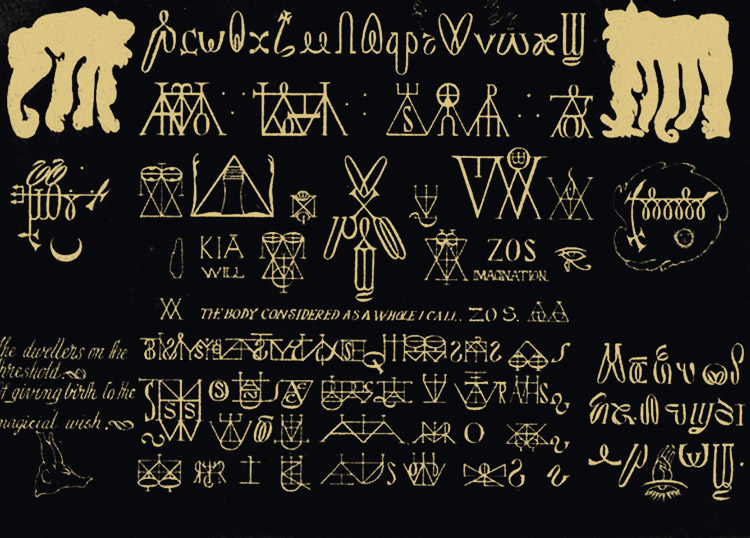
Grant Morrison popularized a variation of Spare's method where all the vowels are removed before the omission of duplicate characters to just leave a string of consonants as a base for the sigil construction.
By reversing this very method, omitting all consonants and preserving the redundancy of all remaining characters you end up with a string of vowels suitable for being chanted as a kind of sonorous sigil.
Although it is not the same technique, chanting a sigil is loosely related to the method of "Mantric Sigils" described in works of Chaos Magic, especially in Frater V∴D∴'s "High Magic: Theory & Practice."47 Using the Greek alphabet with this method results in exactly the kind of vowel sequences we find so abundantly in the PGM and other magical texts of the Helleno-Kemetic era.
In Helios Unbound Nick Farrell also supports a similar idea about the nature of vowel sequences:
I suspect that the use of vowels by themselves in the Greek Magical Papyri and other magical texts might represent [a] form of magical reduction to create a chant of power. They could represent divine names or phrases that have been boiled down to their vowel essence to create a more potent magical effect.48
Praxis
Drawing from all of the theoretical conclusions of all the sections above, here is my attempt of a reconstructed system of Helleno-Kemetic techniques of contemplation:
Creation of Sacred Space
based on PGM XIII. 822-834
- Find a calm place where you feel undisturbed
- Optionally put on a phylactery
- Make it into a temporary sacred space by circumambulating it four times counterclockwise, saying "Hekas, hekas este bebeloi" while fumigating appropriate incense and/or sprinkling some natron
- Enter the circle from the East, walk to the center, turn around facing East
- Looking to the East, stretching out your right and left hand to the left, inhale deeply and for a full outbreath vibrate "A"
- Turn and face North, while you turn, putting forward only your right fist, inhale deeply and for a full outbreath vibrate "E"
- Turn and face West, extending both hands in front of you, inhale deeply and for a full outbreath vibrate "Ē"
- Turn and face South, holding both hands on your stomach, inhale deeply and for a full outbreath vibrate "I"
- Turn and face East again, bend over to the earth, touching the ends of your toes, inhale deeply and for a full outbreath vibrate "O"
- Slowly come back up, look straight, focus on your center, having your hand on your heart, inhale deeply and for a full outbreath vibrate "Ü"
- Look up into the sky, having both hands on your head, inhale deeply and for a full outbreath vibrate "Ō"
Instead of mechanically switching between the described postures try to do shift between them in one continuous flow of movement: when you are finished vibrating a vowel, try to smoothly transition to the next posture while turning. Try to let yourself be guided by the rhythm of your breath. (If you practice any form of Tai Chi you know what I mean.)
Grounding
- Close your eyes, keep both feet shoulder-width apart and more or less parallel. Keep knees slightly bent and unlocked and try an overall completely relaxed and loose posture while keeping your spine erect. Hands should remain completely relaxed, with fingers slightly curled and palms hollowed. Keep your eyes half-open and unfocused. Breathe calmly.
- Visualize yourself radiating peace and harmony into the sacred space around you.
- Stay like this for a few minutes until you feel grounded and protected and ready to begin.
I prefer standing while praying, hence the grounding in an upright position. If you have problems standing or prefer to sit instead, you may of course do so. It also works sitting down.
Basic Chanting
- Take the "orans" position: raise your hands up and outwards, palms facing up but relaxed, keep the elbows close to the sides of the body.
- Breathe slowly, but naturally, without forcing a rhythm.
- Collect your mind and observe your thoughts.
- With every following inbreath lead your mind into the path of the breath along which the air entering in.
- With every following outbreath vibrate the words through your whole body, give each word a full length of exhale.

Variations of Power
-
Have a sound of around 110Hz playing in the background and try to chant the words in a pitch resonant or in harmony with that sound. Nick Farrell has some sound examples of that techniques on his blog.
-
Try to sing the words by introducing improvized melodies to your chant, listen to Coptic liturgical chants for inspiration.
-
Try to make out a rhythm in your chant and start to slightly rock your spine.
-
Experiment with prostrating. When chanting IAO as an adoration for example, vibrate "I" standing up, then go down on your knees with the next inbreath and then vibrate "A", with the next inbreath bow down until your head touches the ground and vibrate "Ō". With the next inbreath raise your head back up, exhale, with the next inbreath get back up to your feet, exhale, inhale and start over.
-
Experiment with walking or turning in a counterclockwise circle while chanting. This works especially well with voces magicae that are palindromes.
-
Repeat the word over and over until it warms your heart. 100 times is better than 10 times.
-
Try the variant for uttering vowel strings is by imitating the grunting of baboons.
Words of Power
If your goal is a meditation to raise your magical mojo while purifying and descending your mind into your heart, here are some suggestions of mantras to chant using the methods described above.
Besides the Jesus Prayer also many other verses from the Bible could be used for contemplation and have also been popular as spells in magical workings and talismans. In the spells of the Anastasi Handbooks several such examples can also be found. Not only from the Bible but also Kemetic phrases of power or verse from Greek sacred texts. In his forthcoming work "Helios Unbound" Nick Farrell writes:
Homer’s Odyssey and Iliad were not just treated as beautifully written poems but sacred texts which explained how the universe worked. [...] The very sentences were holy and could be taken out of context and used to make a point, in the same way that Bible verses were. [...] Through-out the ancient world, we see these verses from the Iliad or [Odyssey] used for divination or the basis of spells. This use of Homeric verses pre-dates and suggests many of the same uses that modern magicians find for Psalms and Bible verses.49
Here are some suggestions of powerful "grammata" for chanting
- IAŌ
- AEĒIOYO
- Abrasax50
- Achebukrōm51
- Bainchōōōch52
- Ablanathanalba53
- Aōth Abaōth Basym Isak Sabaōth54
- Biathiar Barberbi Skhilatour Bouphrountōrm55
- Aski kataski aasian endasian56
- Askion kataskion lix tetrax damnameneus aision56
Here are the most used Christian Orthodox "arrow prayers":
- Iesou57
- Amen
- Maranatha58
- Kyrie eleison59
- Christe eleison60
- Kyrie Iesou Christe, Yie tou Theou, Eleison me ton/tin amartolon.61
- Epshois Esos Pikhrestos, emshiri emifnouti, anok pe pi-ref-ernovi.62
Here are some popular phrases used in Sufi Dhikr:
- Allāh63
- Allāhu ʾakbar64
- Alhamdulillah65
- Lā ʾilāha ʾillā llah66
- Lā ḥawla wa-lā quwwata ʾillā bi-llāh67
Analog to kabbalistic practice you can also experiment with syllables, combining all consonants of the alphabet with the seven Greek vowels:
Ba, Be, Bē, Bi, Bo, Bu, Bō,
Da, De, Dē, Di, Do, Du, Dō,
Fa, Fe, Fē, Fi, Fo, Fu, Fō,
...
Voces Magicae in Existing Spells
If you encounter barbarous names in spells like the ones found in the Anastasi Handbooks, or Coptic or Gnostic papyri, try to analyze the context they are used in.
-
If they are supposed to be secret names of gods within a longer recitation and the text gives no explicit hint about a melody or any way of speaking them, then the default way of vibrating them monotonously or with simple melodic embellishments is probably the way to go.
-
If they are listed at the end of a spell and/or are numerically or gematrically connected to some other barbarous words within that spell, they might have a more meditative or ecstatic function and should probably be intoned in a more powerful way than the rest of the spell. Try adding elements of embodiment, movement or singing to them and remain in a quiet and receptive state after you are finished reciting them.
-
If they are vowel strings, usually in company of other barbarous names, instead of merely vibrating, try to grunt them in a nonhuman baboonic way. It's a lot of fun and very powerful.
In future articles on Helleno-Kemetic Magic in which I will cite spells I will add my own interpretations for ways of reciting the barbarous names and vowel strings therein.
Barbarous Spellcrafting
If you want to create your own Helleno-Kemetic spells or rituals, here are some easy guidelines to make them powerful:
-
try to find barbarous names in the PGM that suit the deities or spirits you are planning to involve in your working
-
try to find sacred verses that match your intention or magical goal. Check Bible psalms, Homeric texts, Kemetic spells. Find the original Greek versions. Optionally reduce them to just vowels.
-
Add vowel strings to the end of the spell, matching them numerically or through gematria to your intent or barbarous names of the deities involved.
-
Create a sonorous sigil by writing down your magical intent and then crossing out all consonants and use the remaining vowel string as a chant. Optionally translate your intent into Greek first.
-
The Buddha's Teachings on Not-Self – Anatta – An Introduction. In the Words of Buddha. January 10, 2014. ↩
-
Frater Acher. Holy Daimon. Scarlet Imprint, 1980. Part 3, Chapter 3: Why Joy Matters ↩↩
-
Solomon, Avi. The Heart of Jewish Meditation: Abraham Abulafia’s Path of the Divine Names. 2013. 5-6 ↩
-
Frankfurter, David. The Magic of Writing and the Writing of Magic: the Power of the Word in Egyptian and Greek traditions." Helios 21.2, 1994. 189-221. ↩
-
Nicomachus of Gerasa, Harmonicum enchiridion. von Jan. Musici Scriptores Graeci. 276, 8ff. Translation: Stephen Gersh, From Iamblichus to Eriugena, 295. ↩
-
Kadloubovsky, E. & Palmer, G. E. H. Writings from the Philokalia on Prayer of the Heart. Faber & Faber, London, 1951. 30 ↩
-
Ibid. 63 ↩
-
Ibid. 315 ↩
-
Ibid. 192 ↩
-
Coniaris, Anthony. Confronting and Controlling Thoughts: According to the Fathers of the Philokalia. Light & Life Publishing Company, 2004. 18 ↩
-
Dawood, Bishoy. Stand, Bow, Prostrate: The Prayerful Body of Coptic Christianity. The Clarion Review. December 8, 2013 ↩
-
Moftah, Laurence, & Croom, Philipp. Ragheb Moftah and Coptic Music. 2007 ↩
-
Fétis, François-Joseph, Chapitre Septième. Le Chant dans les églises de l'Afrique II. Le chant de l'église copte. - Son caractère. In Histoire générale de la Musique depuis les temps les plus anciens jusqu'a nos jours. Paris: Librairie de Firmin-Didot Frères, Fils et Cie, 1874, vol. 4, pp. 96-101. Music Division, Library of Congress. ↩
-
Kaldas, Samuel. A Coptic Good Friday. First Things. April 6, 2012 ↩
-
Mikhail, Deacon Albair Gamal, Good Friday. The Heritage of the Coptic Orthodox Church. April 2, 2004 ↩
-
Nicholson, Raynold A. The Mystics of Islam. Routledge, Kegan Paul, London, 1914 ↩
-
Melki, Samira. The Jesus Prayer and Dhikr: A Potential Contribution to Christian-Muslim Dialogue. In: Papademetriou, George C. Two Traditions, One Space: Orthodox Christians and Muslims in Dialogue. Somerset Hall Press, 2011. 194-199 ↩
-
Ghofrani, Shayesteh. Comparative Analysis of Wilāya in the Formative Period of Shi'ism and Sufism. University of Exeter, 2014. 238 n.1 ↩
-
Gadalla, Moustafa. Egyptian Mystics: Seekers of the Way. Tehuti Research Foundation, 2003. 25 ↩↩
-
Cornell, Vincent J. Voices of Islam: Voices of the spirit. Greenwood Publishing Group, 2007. 59 ↩
-
Naydler, Jeremy. Temple of the Cosmos: The ancient Egyptian Experience of the Sacred. Inner Traditions/Bear & Co, 1996. ↩
-
Allen, Thomas George. The Book of the Dead or Going Forth by Day. Studies in Ancient Oriental Civilization no. 37, 1974. 40 ↩
-
Shah, Idries. The Sufis. Octagon Press Ltd, 1999. 198 ↩
-
Moore, T. Owens. Revisited affect-symbolic imagery. Journal of Black psychology 22.4, 1996. 443-452; also see Carroll, Karanja K. Africana Studies and Research Methodology: Revisiting the Centrality of the Afrikan Worldview. Department of Black StudiesState University of New York, 2008 ↩
-
de Lubicz, R. A. Schwaller. Symbol and the Symbolic: Ancient Egypt, Science, and the Evolution of Consciousness. Aware Journalism, 1981. ↩
-
Gadalla, Moustafa. Egyptian Mystics: Seekers of the Way. Tehuti Research Foundation, 2003. 21 ↩
-
Clarke, Emma C., John Dillon, Jackson P. Hershbell (eds. and trans.). Iamblichus: De Mysteriis. Society of Biblical Lit. Atlanta, 2003. 297 ↩↩
-
Gurgel Pereira, Ronaldo Guilherme. The Hermetic Logos: Reading the Corpus Hermeticum as a Reflection of Graeco-Egyptian Mentality. Diss. University of Basel, 2010 ↩↩
-
Godley, Alfred Denis. Herodotus: with an English translation by AD Godley... in four volumes. William Heinemann, 1920. 279 ↩
-
Ibid. 345 ↩
-
Garb, Jonathan. Shamanic Trance in Modern Kabbalah. University of Chicago Press, 2011. 23 ↩
-
Pentamegistus. Transcending Lust of Result: a Tested Method . October 03, 2018 ↩
-
Godwin, Joscelyn. The Mystery of the Seven Vowels: in Theory and Practice. Red Wheel/Weiser, 1991. 46 ↩↩
-
Jowett, Benjamin. Plato. Philebus. Oxford University Press, American branch, 1892. ↩
-
M.J. Owren et al. The Acoustic Features of Vowel-like Grunt Calls in Chacma Baboons (Papiocyncephalus Ursinus): Implications for Production Processes and Functions. Journal of the Acoustical Society of America, 101, 1997 ↩
-
H. Te Velde, Some Remarks on the Mysterious Language of Baboons. J.H. Kamstra et al. (eds.). Funerary Symbols and Religion. J.H. Kok. Kampen, 1988. 129-137 ↩
-
Taussig H., Calaway J., Kotrosits M., Lillie C., Lasser J. (2010) The Thunder: Perfect Mind, Annotated Coptic Text and English Translation. In: The Thunder: Perfect Mind. Palgrave Macmillan, New York. 5 ↩
-
Dornseiff, Franz. Das Alphabet in Mystik und Magie. BG Teubner, 1925. 52 ↩
-
Miller, Patricia Cox. In Praise of Nonsense. Classical Mediterranean Spirituality, 1986. 490 ↩
-
Malinowski, Bronislaw. Coral Gardens and Their Magic: A Study of the Methods of Tilling the Soil and of Agricultural Rites in the Trobriand Islands. The language of magic and gardening. II. Psychology Press, 2001. 218 ↩
-
Mirecki, Paul, et al. Magic and Ritual in the Ancient World. Brill, 2001. 116 ↩
-
Ferguson, Everett. The Early Church at Work and Worship-Volume 2: Catechesis, Baptism, Eschatology, and Martyrdom. Wipf and Stock Publishers, 2014. 247 ↩
-
Grant, Kenneth. Austin Osman Spare: An Introduction to His Psycho-magical Philosophy. Carfax Monographs, Vol. IV, 1961 ↩
-
Frater U∴D∴. High Magic: Theory & Practice. Llewellyn Publications, 2005. 161ff ↩
-
Farrell, Nick. Helios Unbound (Limited Edition). Self published on lulu.com. Forthcoming by Immanion Press, 2020 ↩
-
Farrell, Nick. Helios Unbound (Limited Edition). Self published on lulu.com, 2019. Forthcoming by Immanion Press, 2020; see also: Collins, D. (2008). The Magic of Homeric Verses. Classical Philology, 103(3), 211–236. ↩
-
sun god of the year, gematria value 365 ↩
-
secret name of Helios ↩
-
Egyptian "b3 n kkw" or "Ba of Darkness", an epithet of the primordial god ↩
-
popular palindrome, from Aramaic, meaning "Thou art our father" (אב לן את) ↩
-
taken from the Stele of Jeu, from Aramaic, meaning "Host, heavenly host, in the name of Isaac, heavenly host!" ↩
-
secret name from the 8th Book of Moses (36 letters) ↩
-
Greek for "Jesus" ↩
-
from Aramaic, "our Lord comes" (מרנא תא) ↩
-
Greek for "Lord have mercy" ↩
-
Greek for "Christ have mercy" ↩
-
The mostly used "Jesus Prayer" in Hesychasm in Greek: "Lord Jesus Christ, Son of God, have mercy on me, a sinner." Use "ton" if you are male, "tin" if you are female. ↩
-
The Jesus Prayer ↩
-
الله is the Arabic word for God ↩
-
الله أَكْبَر means "God is greater" or "God is the greatest" ↩
-
الحمد لله means "All praise is due to God" ↩
-
لا إله إلا الله means "There is no god but Allah" ↩
-
لا حول ولاقوة إلا بالله means "There is no power or strength except with God." ↩
